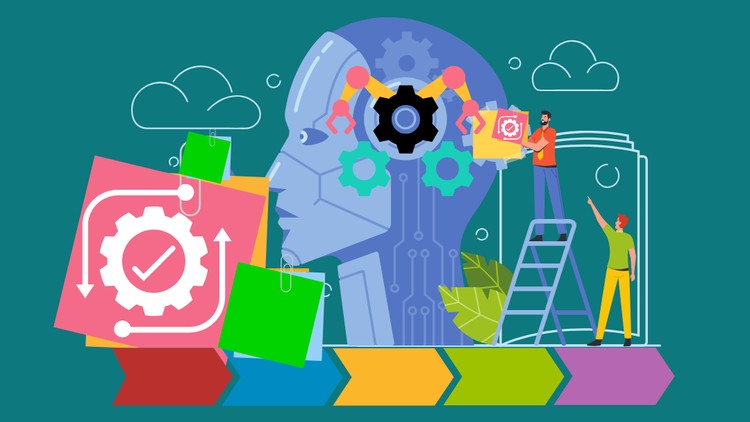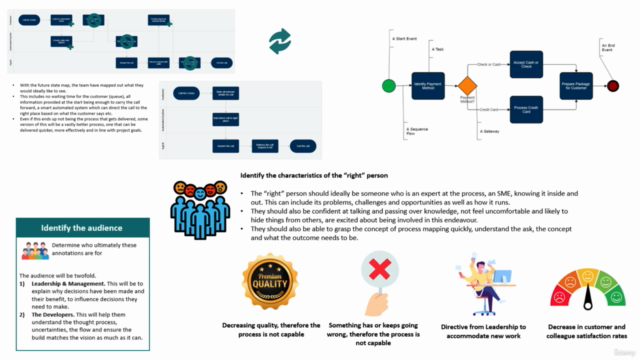Automation Project 3: Mapping the process(es)

Why take this course?
🚀 Course Title: RPA Project: Mapping the Process(es)
🔥 Headline: Unlock the Secrets of RPA Success with Expert Process Mapping!
🎓 Course Description:
Are you ready to transform your approach to RPA (Robotic Process Automation)? This comprehensive online course isn't just about coding or building bots; it's about mastering the critical skills of mapping and modeling processes that are fundamental to delivering successful RPA projects. 🌟
Why this Course?
In today's fast-paced digital world, businesses are racing to implement RPA solutions. Yet, many overlook the management aspect of these projects—a key determinant of success. This course bridges that gap, focusing on the crucial task of mapping your current state processes and designing your future state processes for seamless automation.
Course Highlights:
-
Understanding RPA, Processes & States: 🧩 Dive into the fundamentals of RPA, learn the difference between current and future states, and understand the importance of each.
-
Mapping Your Current State Process: 📐 Learn step-by-step techniques to accurately map out your existing processes, identifying inefficiencies and opportunities for automation.
-
Modeling Your Future State Process: 🚀 Envision and design a future state process that leverages RPA to improve efficiency, reduce errors, and cut costs.
-
Review & Annotation: 📝 Master the art of reviewing your processes, annotating them for clarity, and incorporating feedback from various stakeholders.
-
Choosing the Right Mapping Method: 🎨 Discover different mapping methods, select the best one for your project, and guide your team through a successful workshop.
-
Preparing for Development: 🛠 Ensure your future state process is detailed, approved, and ready for the developers to turn into automated solutions.
What You'll Learn:
-
The Essence of RPA: Understand what RPA entails and why it's a game-changer in modern business processes.
-
Current State Analysis: Identify how your current processes operate, what they look like today.
-
Future State Design: Envision how you want your processes to be after automation, and what the future state should achieve.
-
Process Improvement Techniques: Apply best practices to refine your process for optimal efficiency.
-
Stakeholder Collaboration: Work with your team, gather feedback, and adapt your process design accordingly.
-
Presentation Skills: Learn how to effectively present your mapped processes to various audiences for buy-in and approval.
By the End of This Course:
You will be equipped with the knowledge and skills to:
- Confidently map out the current state process in scope for your RPA work.
- Gather feedback, comments, and requirements on this mapping.
- Collaborate with colleagues to build a future state process that is fit for purpose and ready for delivery.
Who Should Take This Course?
This course is perfect for:
- Process Analysts
- RPA Developers
- Business Analysts
- Project Managers
- Change Managers
- Anyone looking to enhance their understanding of process mapping in the context of RPA.
Embark on your journey towards RPA mastery today! 🤖✨
Enroll now and take the first step towards transforming your business processes with Robotic Process Automation! 🚀📈
Course Gallery




Loading charts...
Comidoc Review
Our Verdict
This course has earned its 4.50 global rating with good reason—it effectively lays the foundation for those involved in RPA project planning, successfully mapping current and future state processes with a step-by-step approach based on best practices. Although niche, it’s an informative resource that will benefit professionals looking to optimize automated solutions within their organizations. However, if you're seeking more advanced technical demonstrations or content applicable outside of RPA process documentation, this might not be the ideal course for you.
What We Liked
- The course offers a clear, structured approach to process mapping in the context of Robotic Process Automation (RPA)
- It breaks down each step of mapping processes with real-world examples that show how to create accurate and detailed workflows
- The focus on both current and future state processes provides a comprehensive understanding of RPA projects and their successful delivery
- A wide range of considerations are covered, ensuring mappers know how to choose the right mapping method, gather the team and run the workshop
Potential Drawbacks
- The course subject matter might be too specialized for individuals outside of process improvement or RPA-related roles
- Some users may require more technical detail about implementing automated solutions within their mapped processes
- The pace could be challenging for learners with no prior exposure to RPA or process mapping concepts
- While the course provides ample real-world examples, requests for additional case studies would have been beneficial